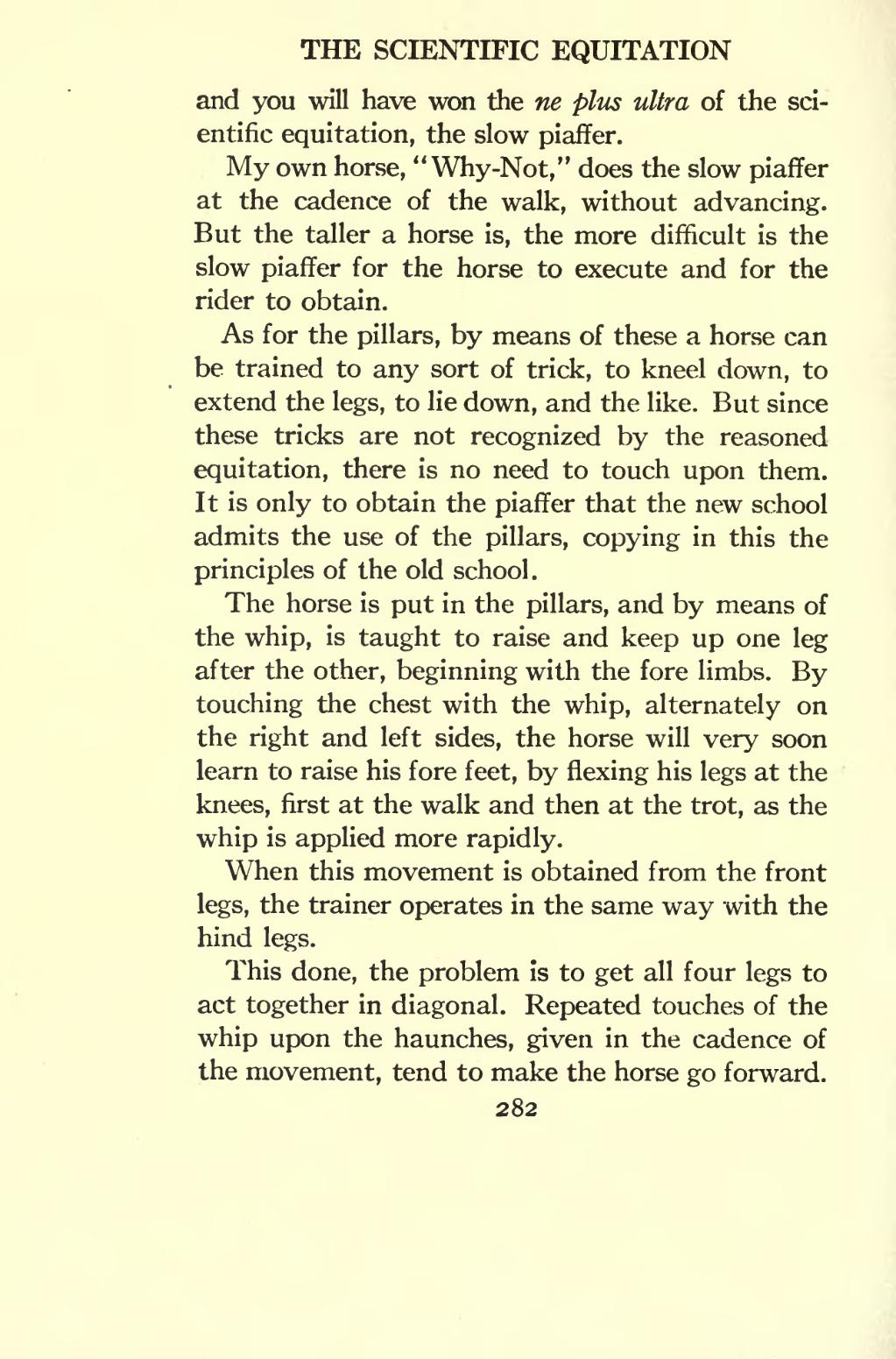and you will have won the ne plus ultra of the scientific equitation, the slow piaffer.
My own horse, " Why-Not," does the slow piaffer at the cadence of the walk, without advancing. But the taller a horse is, the more difficult is the slow piaffer for the horse to execute and for the rider to obtain.
As for the pillars, by means of these a horse can be trained to any sort of trick, to kneel down, to extend the legs, to lie down, and the like. But since these tricks are not recognized by the reasoned equitation, there is no need to touch upon them. It is only to obtain the piaffer that the new school admits the use of the pillars, copying in this the principles of the old school.
The horse is put in the pillars, and by means of the whip, is taught to raise and keep up one leg after the other, beginning with the fore limbs. By touching the chest with the whip, alternately on the right and left sides, the horse will very soon learn to raise his fore feet, by flexing his legs at the knees, first at the walk and then at the trot, as the whip is applied more rapidly.
When this movement is obtained from the front legs, the trainer operates in the same way with the hind legs.
This done, the problem is to get all four legs to act together in diagonal. Repeated touches of the whip upon the haunches, given in the cadence of the movement, tend to make the horse go forward.
